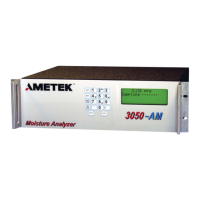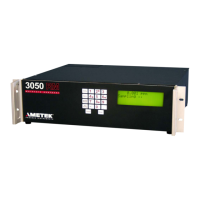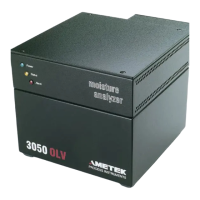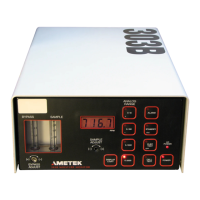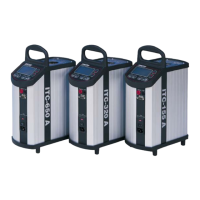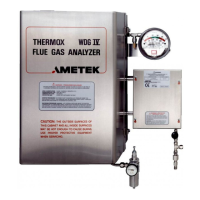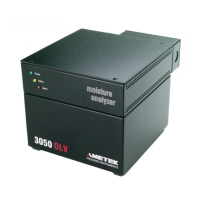
Do you have a question about the Ametek 3050-OLV and is the answer not in the manual?
| Brand | Ametek |
|---|---|
| Model | 3050-OLV |
| Category | Measuring Instruments |
| Language | English |
Covers safety precautions for electrical connections and the importance of proper grounding.
Details safety information for personnel involved in installation, operation, and maintenance.
Provides critical warnings regarding hazardous locations and component substitution.
Recommendations for installation and wiring to ensure EMC compliance.
Explains warning symbols and provides guidance on WEEE disposal.
Introduces the analyzer's function and compatibility with various gas types.
Explains the QCM sensor's mechanism for moisture measurement.
Describes the Normal and Sensor Saver operating modes.
Details the available communication ports for analyzer control.
Covers onboard verification, gas flow requirements, and dewpoint calculations.
Defines natural gas for flow control and lists compatible gases.
Covers safety, personnel, storage, and site preparation for installation.
Lists required tools and supplies and details unpacking procedures.
Step-by-step instructions for mechanical and dryer installation.
Provides guidance on making electrical connections and wiring.
Details wiring for 4-20 mA outputs and serial communication.
Explains RS-485 and RS-232 wiring, including conversion.
Covers analyzer start-up, dry down period, and status indicators.
Introduces the configurator software, installation, and General tab usage.
Details options for AMETEK Serial, Modbus Serial, and Modbus TCP setup.
Covers setting communication parameters for multiple analyzers.
Guides through setting gas, units, pressure, and output parameters.
Explains how to schedule and configure verification procedures.
Details observing operation, capturing data, and adjusting flow meter.
Safety warnings before maintenance and chapter overview.
Information on AMETEK's aftermarket support and service plans.
Procedures for requesting technical support and returning equipment.
Lists replacement parts and introduces diagnostic troubleshooting charts.
Guides through diagnosing and resolving pressure, temp, and flow problems.
Explains frequency offset, span factor, and common alarm messages.
Details ranges, accuracy, response time, and environmental conditions.
Covers power requirements, certifications, and rating label details.
Describes Modbus protocol, standards, and supported interfaces.
Details parameters like address, baud rate, parity, and stop bits.
Lists supported Modbus functions, exceptions, and holding register definitions.
Explains system state decoding, alarms, and ID/status reporting.
Provides examples for configuring alarms, outputs, gas selection, and verification.
